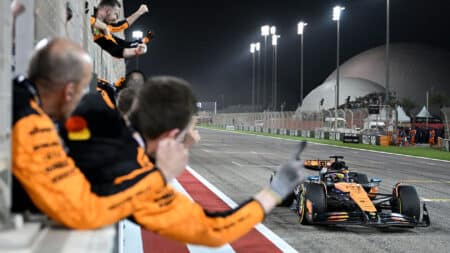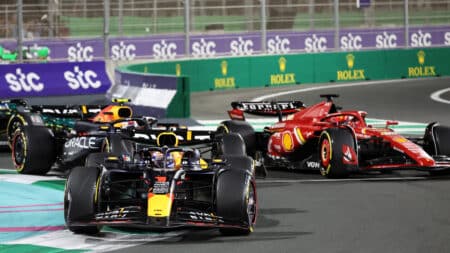Front and rear interconnected suspension (FRICS) suddenly swept into the F1 headlines last week after the FIA’s technical delegate Charlie Whiting wrote to all the teams, advising them that in his opinion such systems were not legal. That didn’t mean they were banned as such – Charlie is neither the judge nor jury in such cases – but it did raise the spectre of any car thus equipped in subsequent races being protested, and then Charlie’s opinion would carry a lot of weight.

Given that the system was introduced by Renault five years ago and has been progressively adopted by the rest of the field since, mid-season 2014 seemed an odd time to be raising legality questions about it. Conspiracy theories were quickly flying about, such as that it was a plot to clip the wings of Mercedes, to bring a bit of variation into the results, instigated by Bernie Ecclestone.
Or it was a devious ploy by Ferrari (or Red Bull) to pull themselves closer to Mercedes. Certainly in its timing and procedure, it all felt similar to the mass damper ban of mid-season 2006 – which really could only be read as a massively politically loaded attempt by Ferrari through the FIA at neutralising a key advantage of its championship rival, Renault.

This time it’s almost certainly innocuous in its intent from the FIA’s perspective (something that wasn’t easy to claim during the Max Mosley-led time of the mass damper ban when Ferrari and the FIA were always aligned and Renault’s Flavio Briatore was frequently off-message). But as to why Charlie has been obliged to look at FRICS, that could be a slightly different story.
Ostensibly, he’s given his opinion because he was specifically asked for it by two teams – believed to be Red Bull and Ferrari – because they claimed it affected how they configured their 2015 cars, which are being designed now. Their inference was they were thinking of incorporating FRICS into a new area of advantage, but they needed the reassurance of its legality before making such a step.
The frequent reality in such cases is that such a development is theoretical at best, fantasy at worst, and that it’s simply made as a threat in order to have a technology banned. The only reasons teams try to have a technology banned is 1) because they believe it will neutralise an advantage held over them by a rival or rivals. Or 2) because they believe it will destroy a compensating technology other teams have in combating a different technology advantage they have.

Silverstone, 2011: Ferrari’s only win of the season came after a temporary ban on blown diffusers
FRICS hydraulically links the front and rear suspension through a series of actuators and reservoirs. It is a purely mechanical system, activated by the spring movements and as such does not contravene the ban on electronically active suspensions in place since 1994. Some teams – notably Mercedes, Williams and Lotus – have the further refinement of side-to-side linking. There are several side benefits but the key one is aerodynamic (which is what, in Charlie’s opinion, makes it illegal).
In allowing the car to remain more level under heavy braking, the static front ride height can be set lower, conferring a downforce advantage, particularly in slower corners where the car is running at its highest, relatively uncompressed by downforce – a force which squares with speed and therefore square-root reduces with loss of speed.
With a non-FRICS car, as the braking is released into the slow corner, so the front of the car pops back up and downforce is lost. With a FRICS car, hydraulically linking the energy from the car’s diving motion to the front dampers, it can be engineered to stay down for as long as needed.

If you were cynical you might say that this technology would reduce the advantage of any team that had found a way of combining carbon lay-up with stress analysis and aero simulation to come up with a nose that deflects upwards as the car is forced downwards by downforce, thereby allowing a much lower front ride height – even without FRICS.
This has been at the heart of Red Bull’s aerodynamic advantage since at least 2010. The team has an exclusive use agreement with the company that devised the software combining stress finite element analysis (FEA) with CFD to give the required carbon lay-up that allows this, whilst still passing all the FIA flexibility tests.
Get rid of FRICS and the advantage of the nose-flexing technology is surely increased. Has Ferrari decoded how it works, perhaps aided by the inevitable flow of personnel over time between teams, and is looking to incorporate it into next year’s car? A clue might be the performance of Red Bull at Hockenheim if everyone elects to run without FRICS this weekend.








